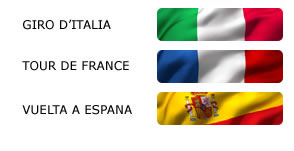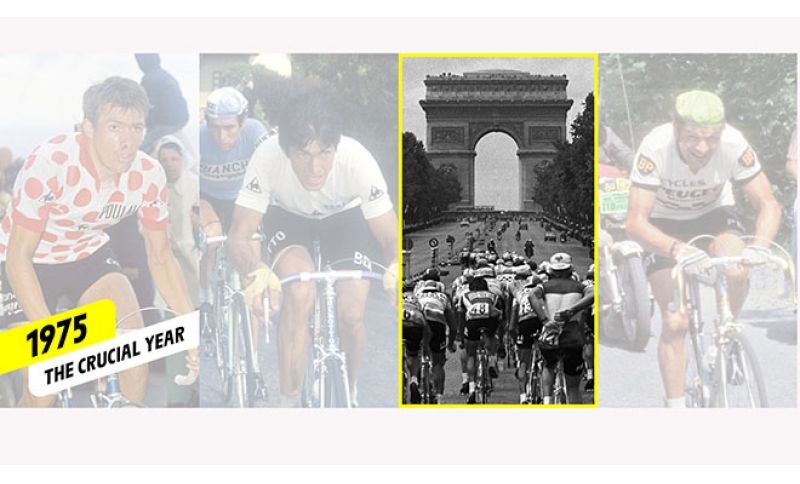

A wind of change swept through the 1975 Tour de France. When the organizers decided to introduce various innovations, they had no idea how long-lasting they would be, but time has proven them right.
Three of these changes now celebrate their 50th anniversary: the polka dot jersey for the best climber, the white jersey for the best young rider, and the final stage finish on the Champs-Élysées.
These innovative choices were a corollary to an exceptional edition of the Grande Boucle that saw Bernard Thévenet become the first rider to defeat Eddy Merckx at the Tour. The official site of the Grande Boucle invites us to retrace 50 years of this history in four appointments: this is the third in the series.
THE AVENUE OF CHAMPIONS
When it comes to blending the aesthetic beauty of an environment with the emotion of a sporting event, the Tour de France works miracles. And in this context, the finish line on the Champs-Élysées is the arena par excellence, especially for sprinters hunting for glory. On this 600-meter stretch of cobblestones, with a slight uphill gradient, they unleash every last gram of energy, hoping to imprint their name in legend on this mythical avenue, which serves each year as an unofficial world championship for sprinters. The tradition is all the richer because it is sometimes challenged by bold attackers like Bernard Hinault (1979-82) or Eddy Seigneur (1994). This year's route modification, which will take riders three times up the Montmartre hill, could open the door to new daredevils making history.
1 A WINNING CHOICE
The Tour de France used to finish at Parc des Princes and the Cipale Velodrome. Then, in 1975, following a suggestion by famous journalist Yves Mourousi, race directors Félix Lévitan and Jacques Goddet aimed higher, offering both riders and fans a true grand finale: the Champs-Élysées. The move was an immediate success.
2 - BETWEEN EDDY AND BERNARD... GODEFROOT EMERGES
The 27 laps of the circuit were animated by the final duel between Eddy Merckx and his 1975 conqueror, Bernard Thévenet. But in the end, it was a sprint. Walter Godefroot won the stage and kicked off a long series of Belgian victories on the Champs.
3 - HINAULT AND ZOETEMELK ON THE ATTACK
At the 1979 Tour, Bernard Hinault had already won six stage victories and led Joop Zoetemelk by over three minutes. Yet the two escaped from the group 50 kilometers from the finish. On the Champs-Élysées, "the Badger" was unbeatable, concluding his most successful Tour with a seventh victory.
4 - MAERTENS, THE FIRST IN GREEN JERSEY
Two-time world champion Freddy Maertens is one of the greatest bouquet collectors in cycling. He won 15 Tour stages in just three participations. In 1981, he was the first to win on the Champs-Élysées wearing the green jersey, his last pedaling at the Tour.
5 - HINAULT LIKE NO ONE ELSE IN HISTORY
In 1982, Hinault once again made a point of pride in winning on the Champs, this time in a sprint, defeating Adrie Van der Poel. No other rider has ever conquered victory here wearing the yellow jersey.

Se sei giá nostro utente esegui il login altrimenti registrati.